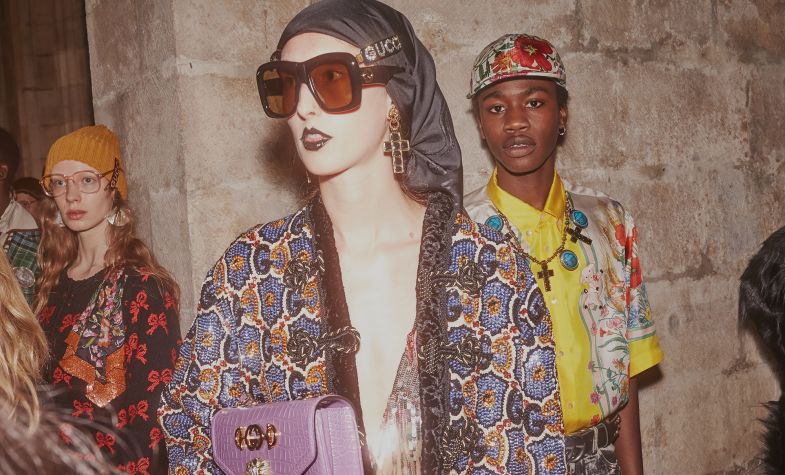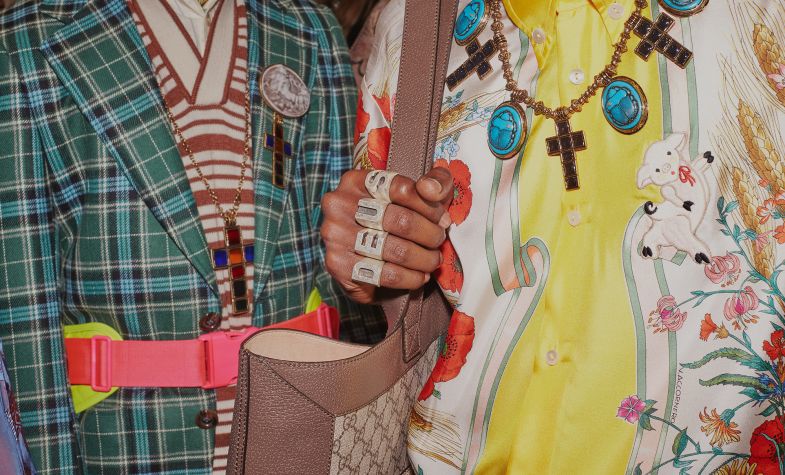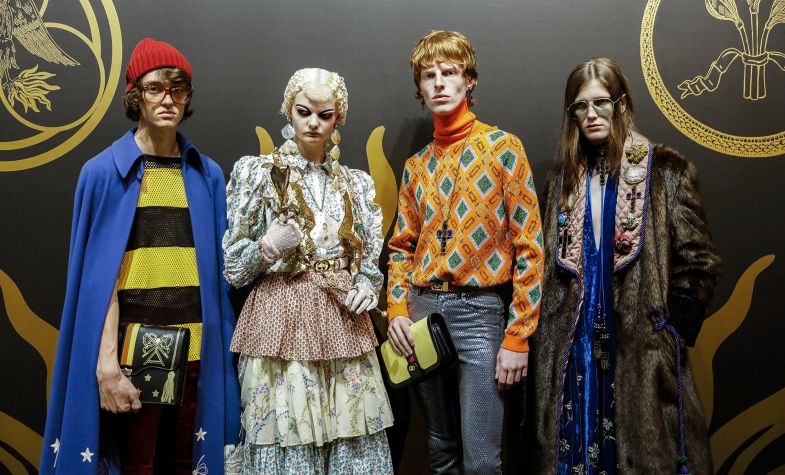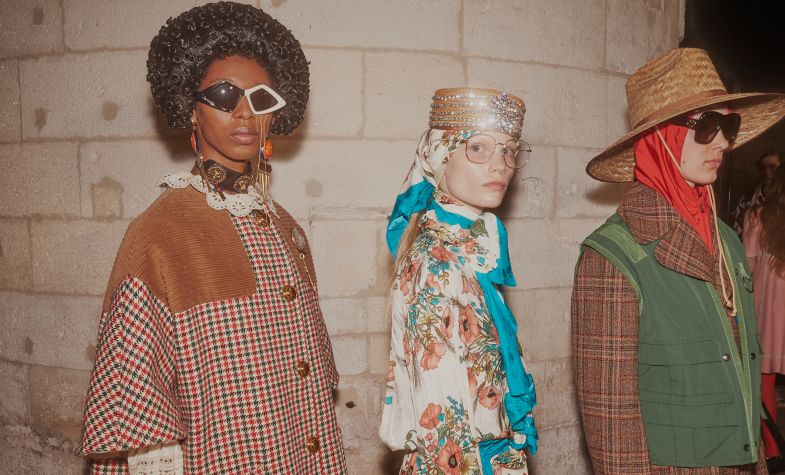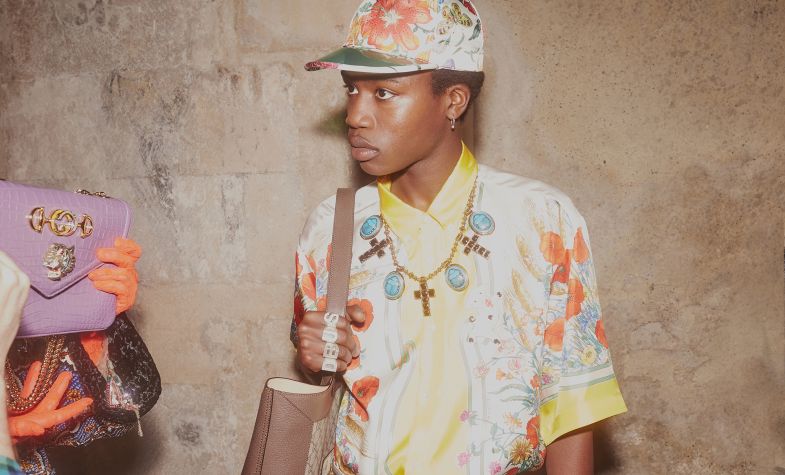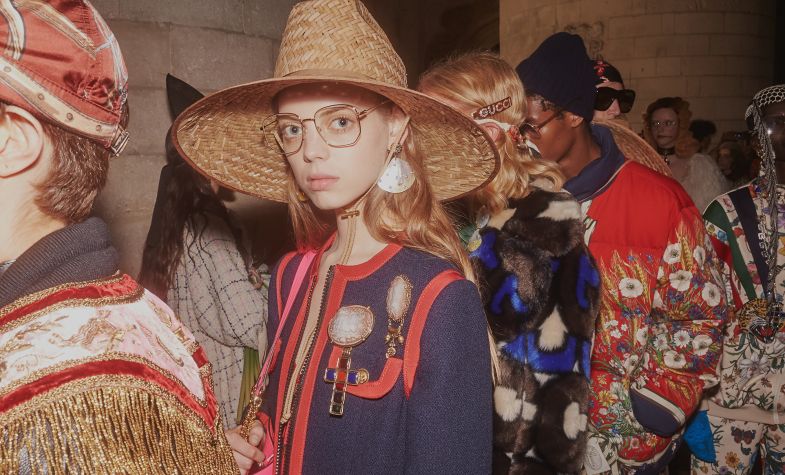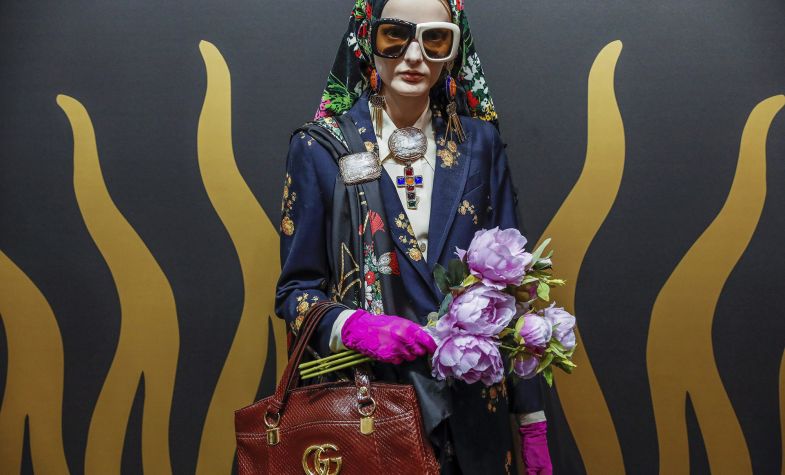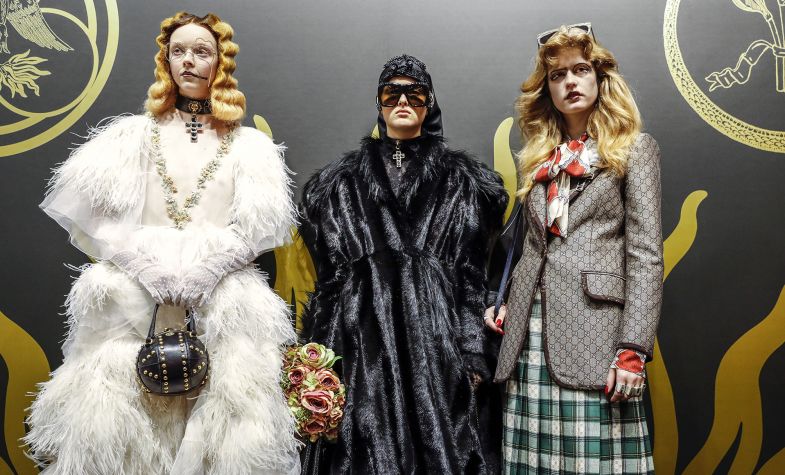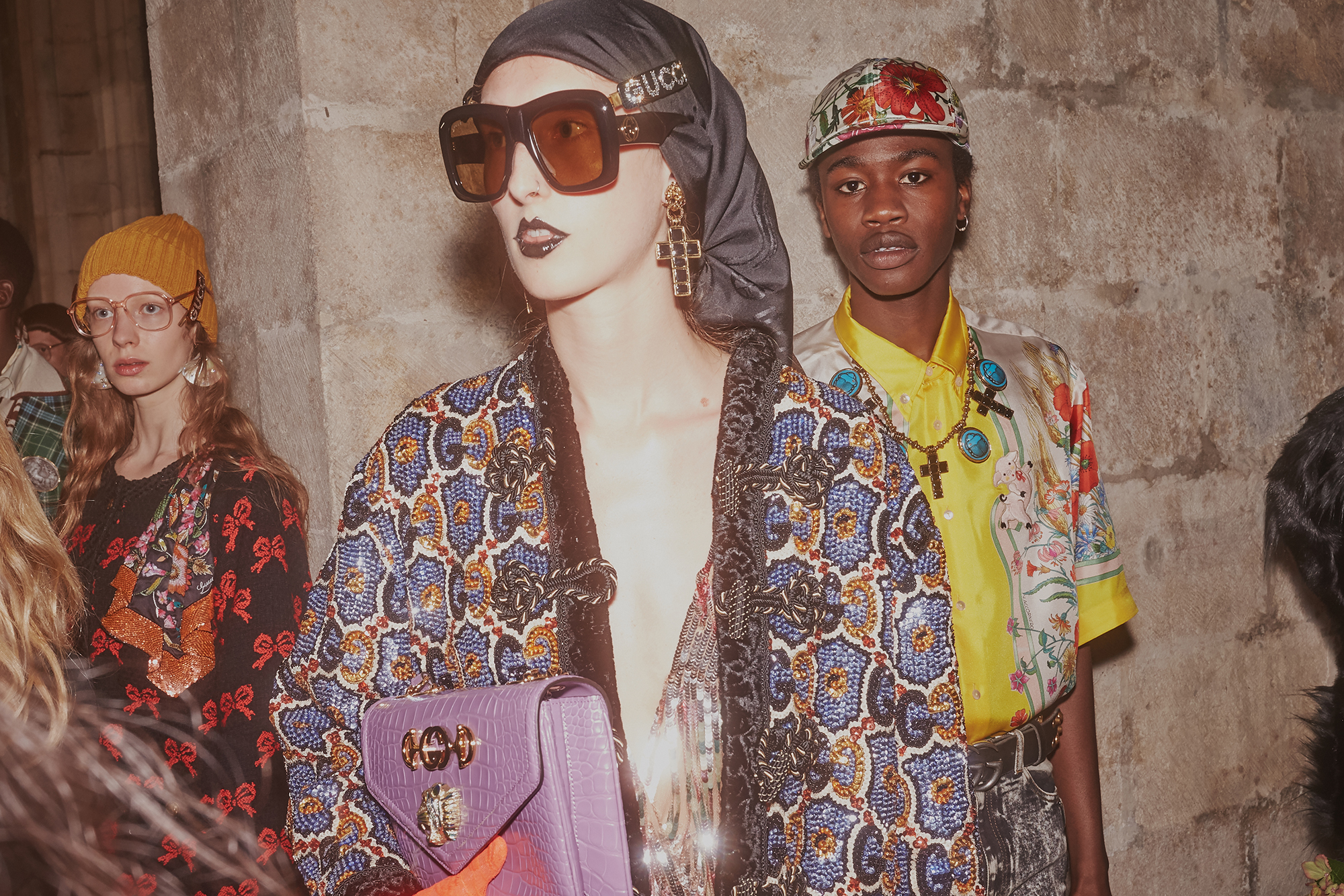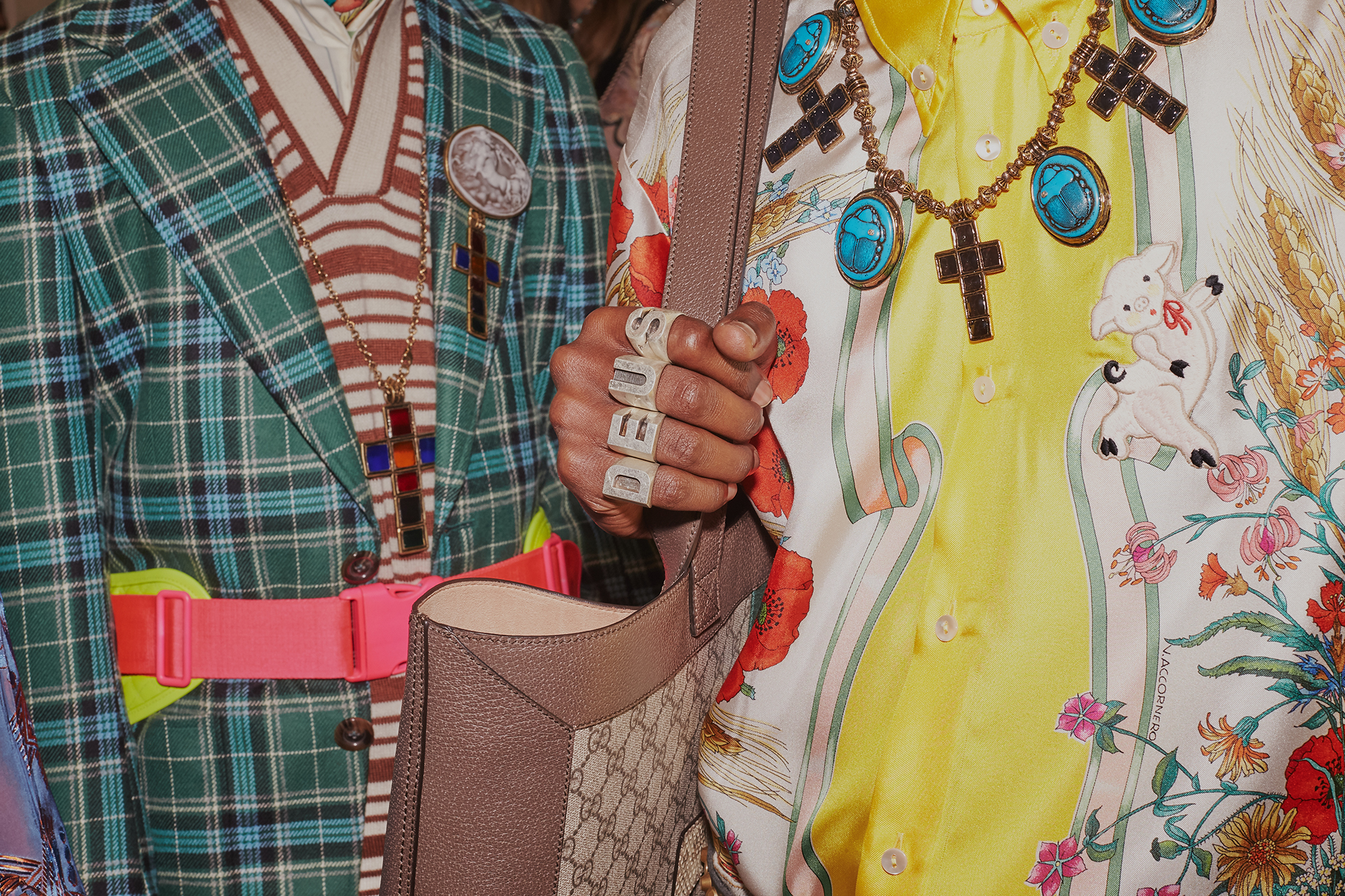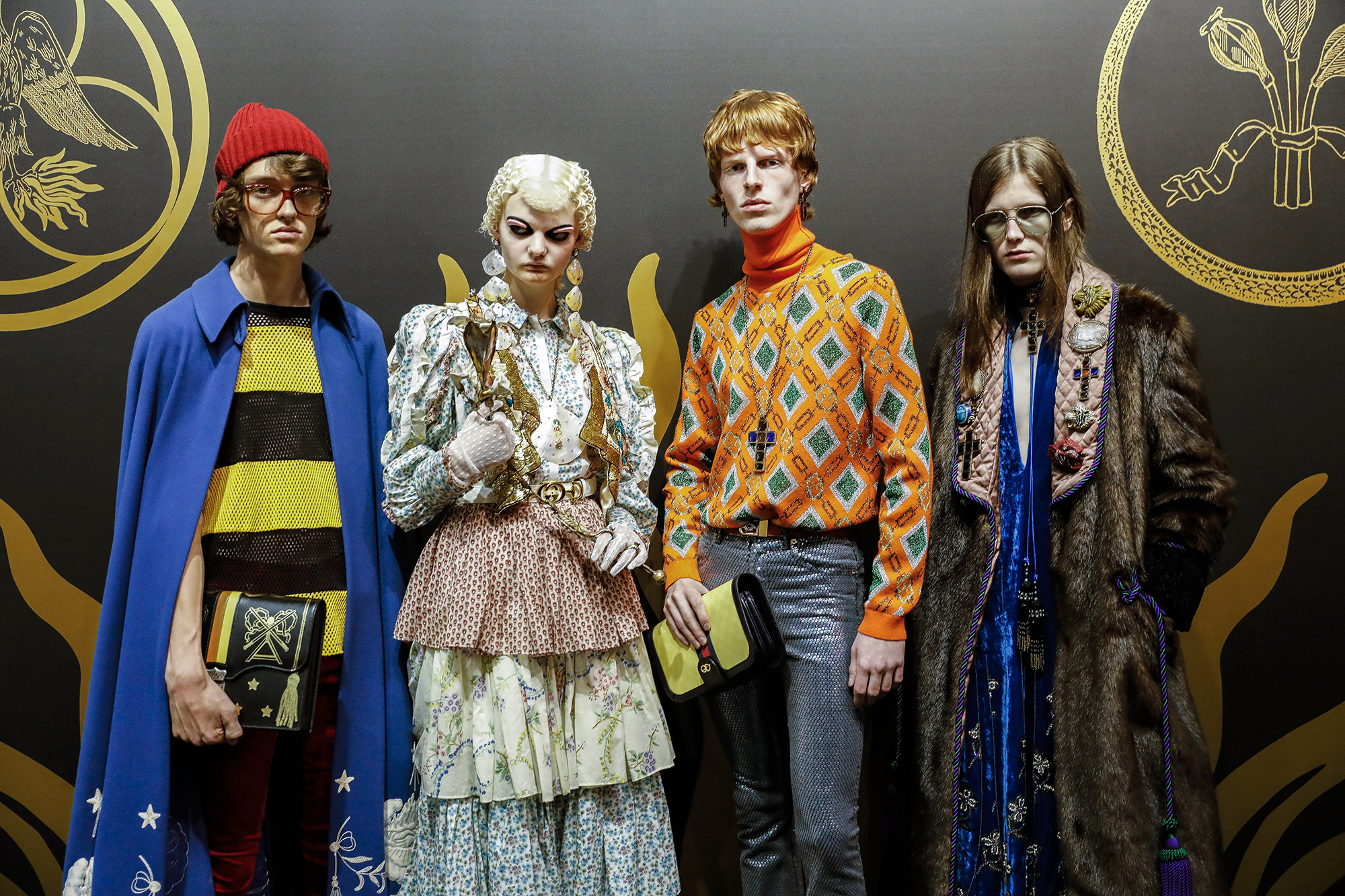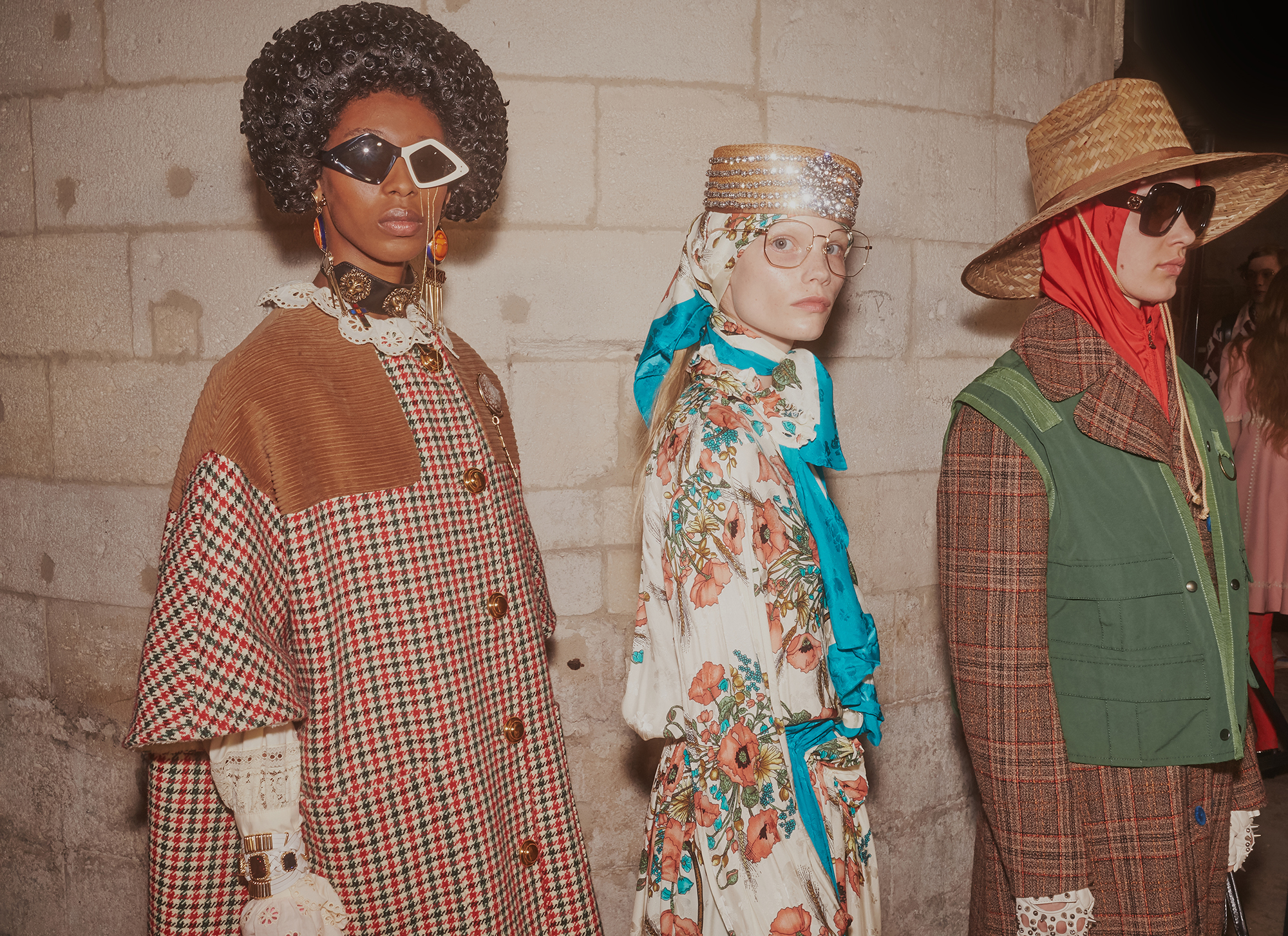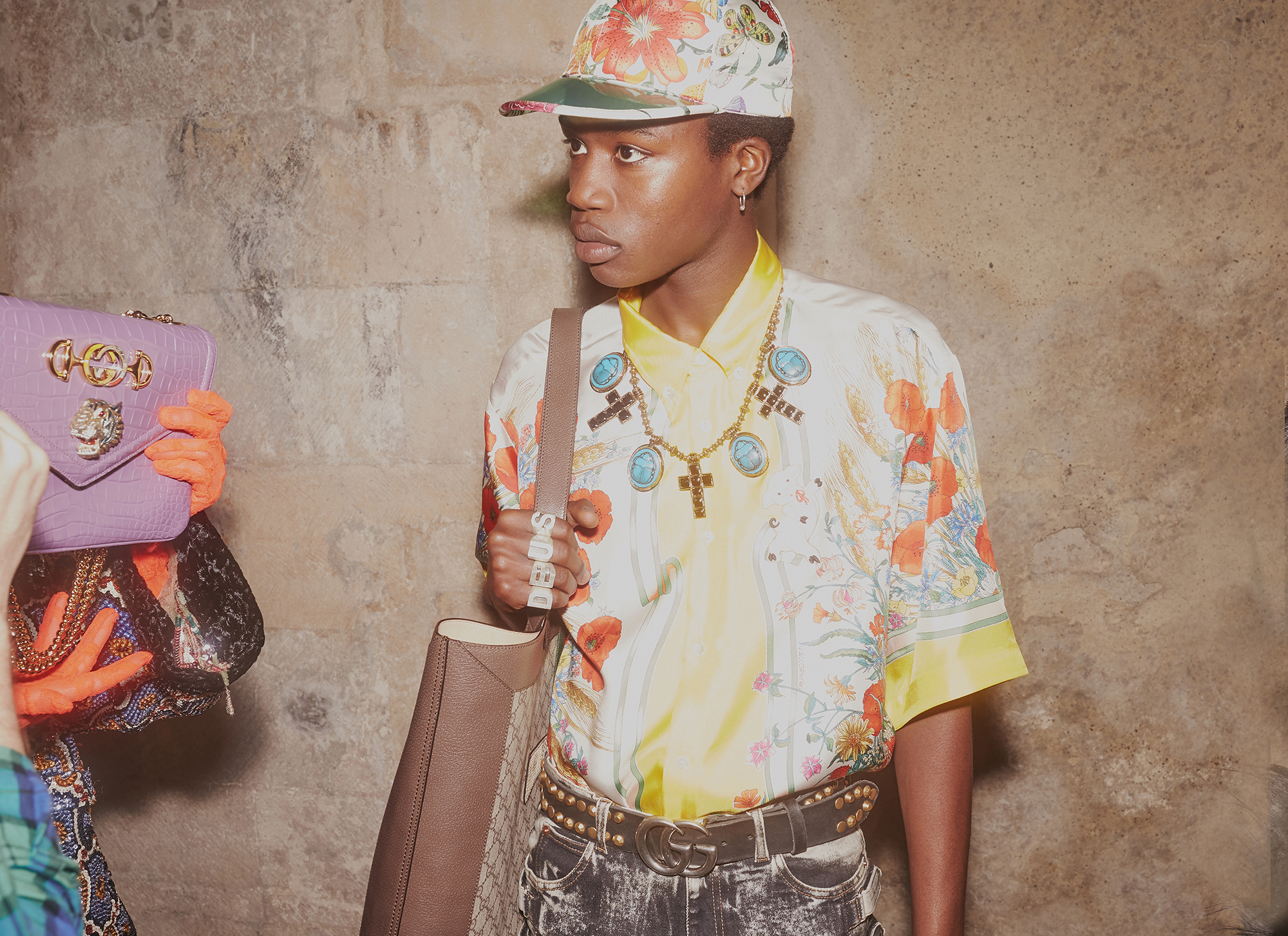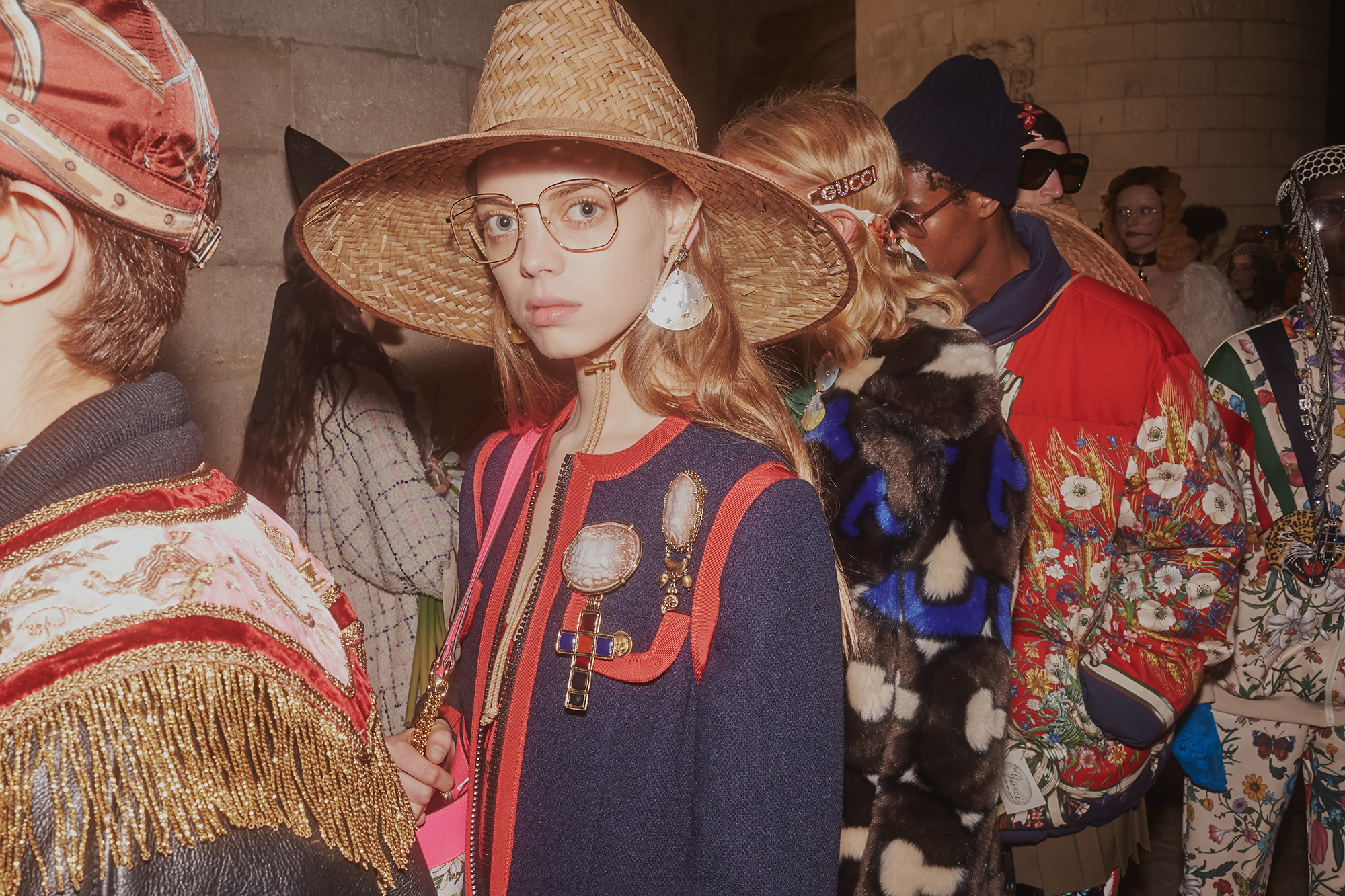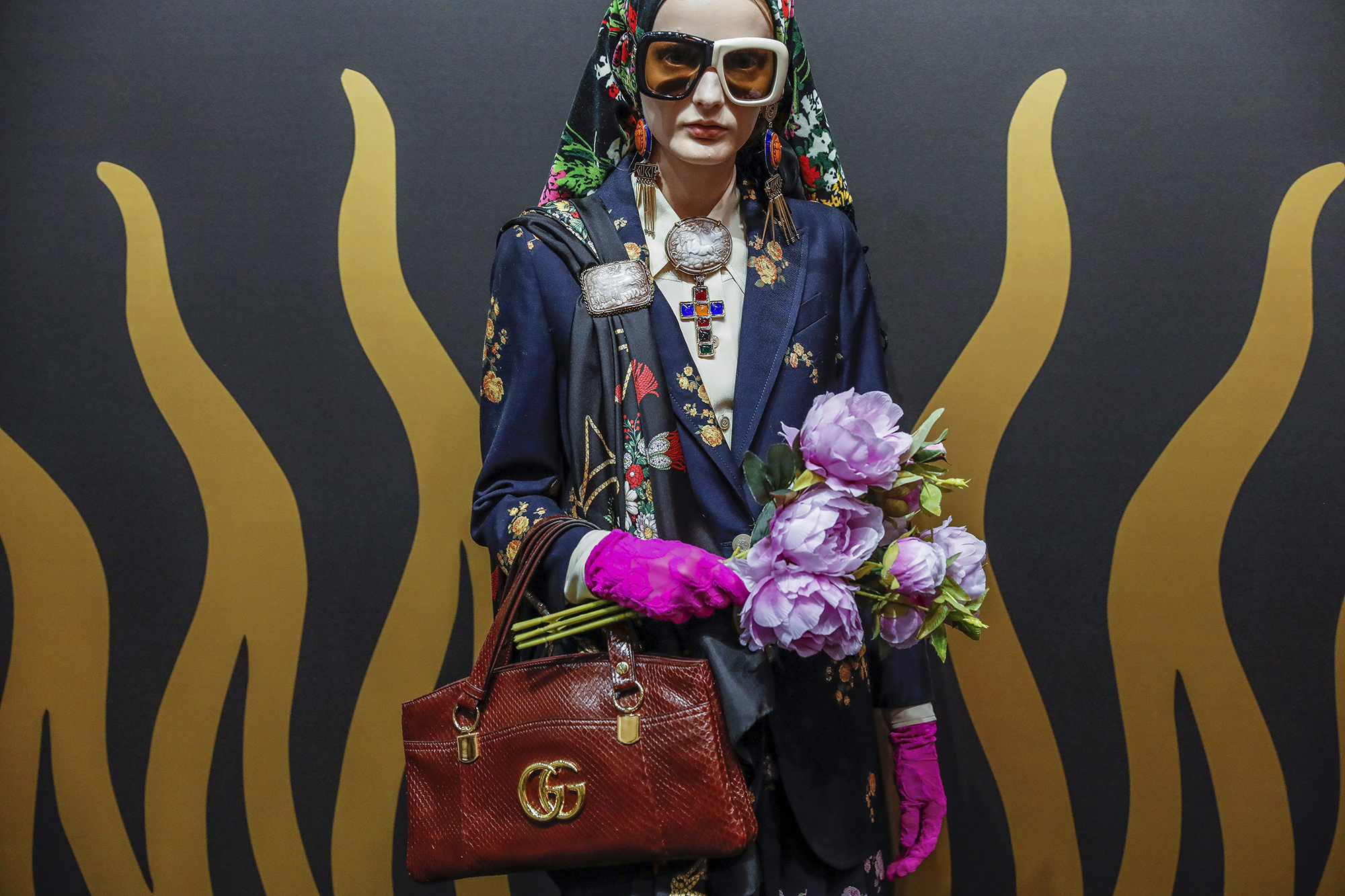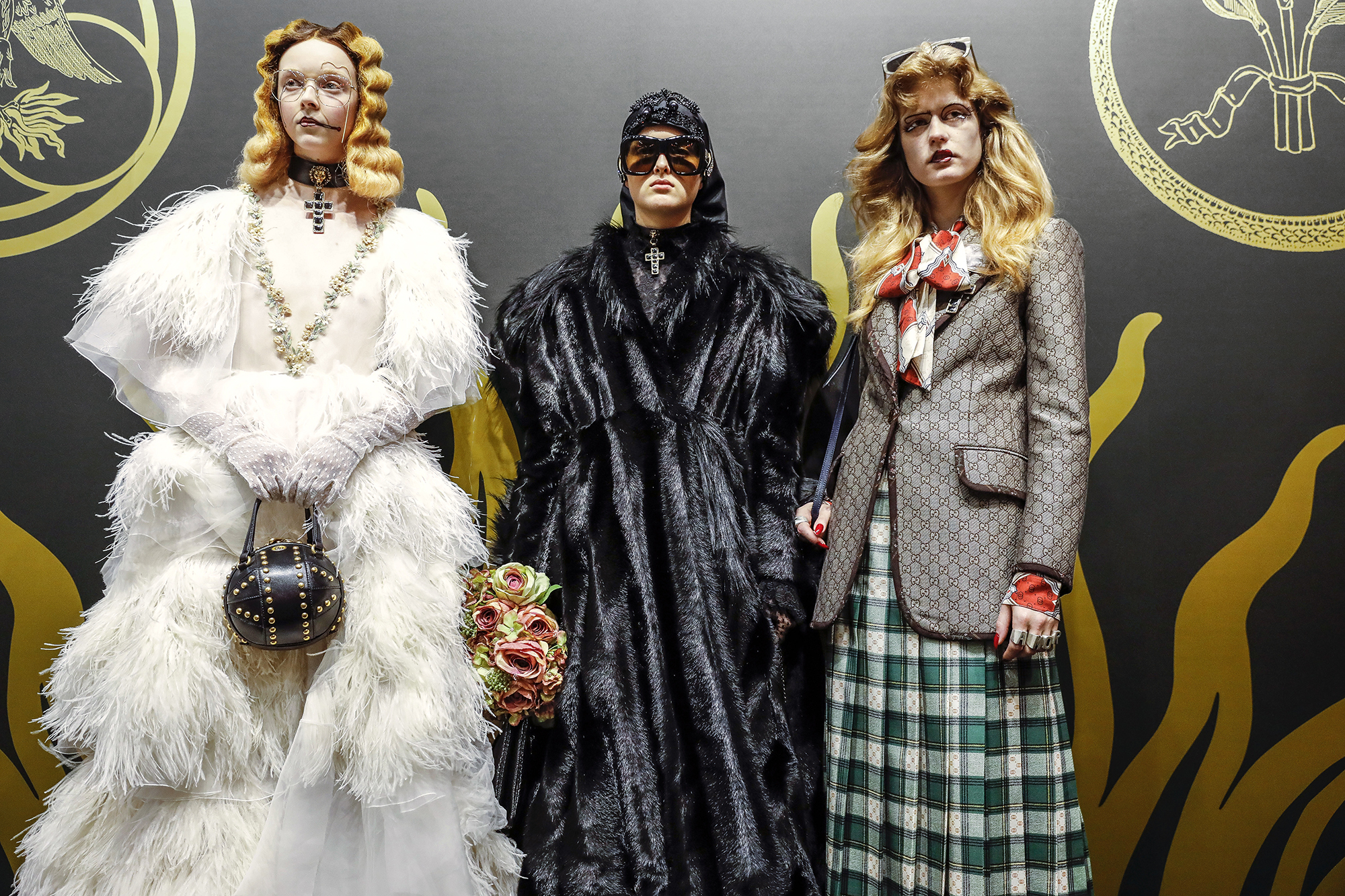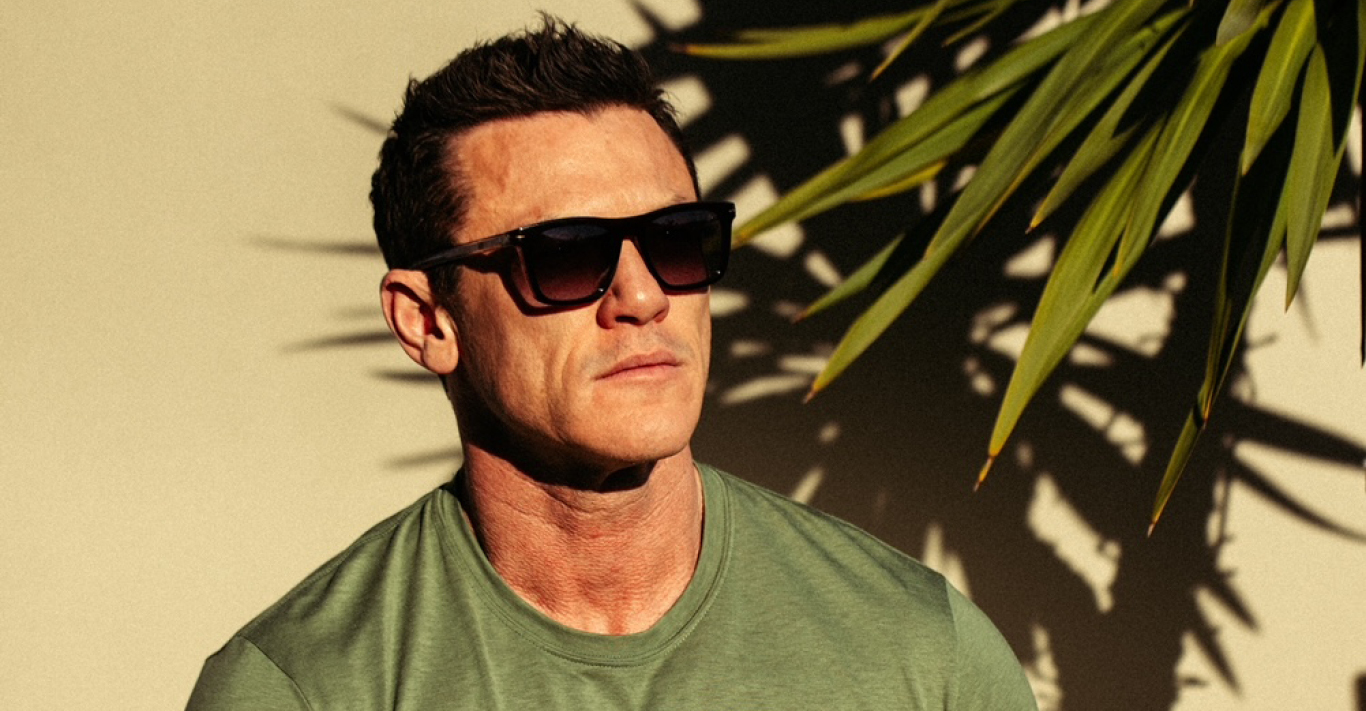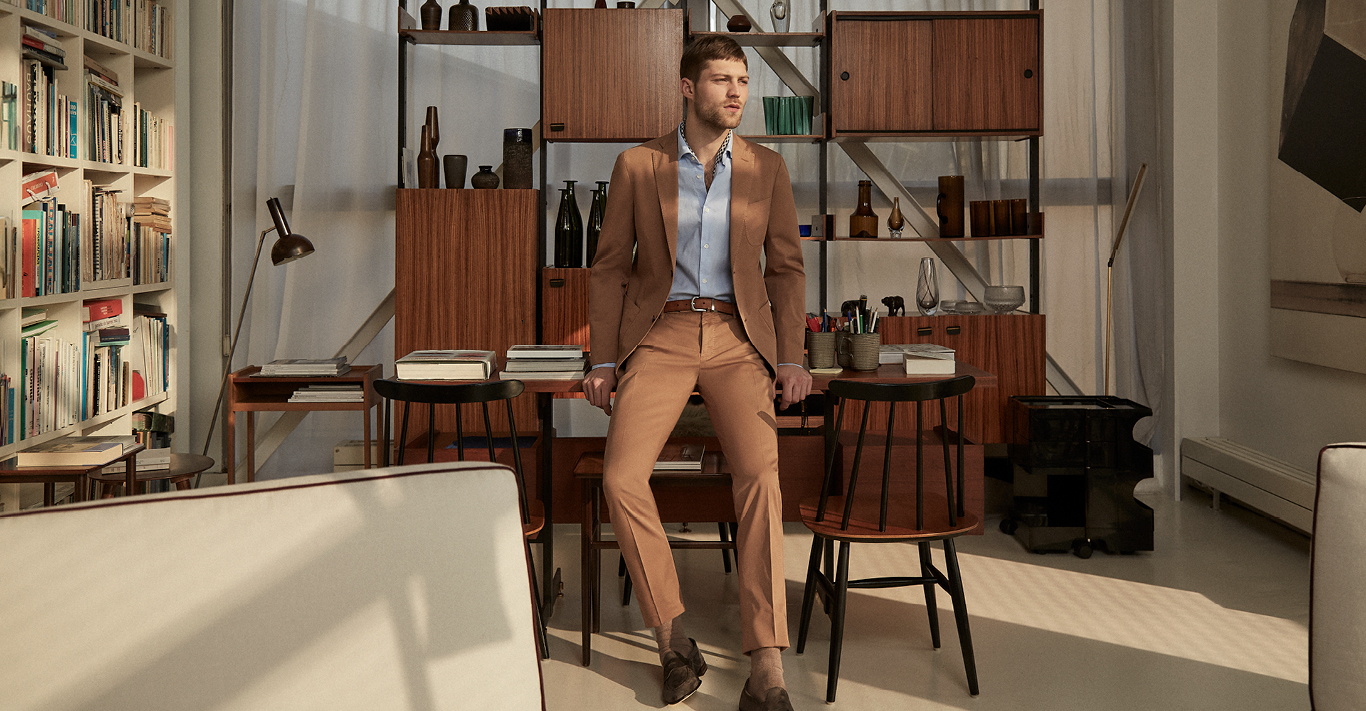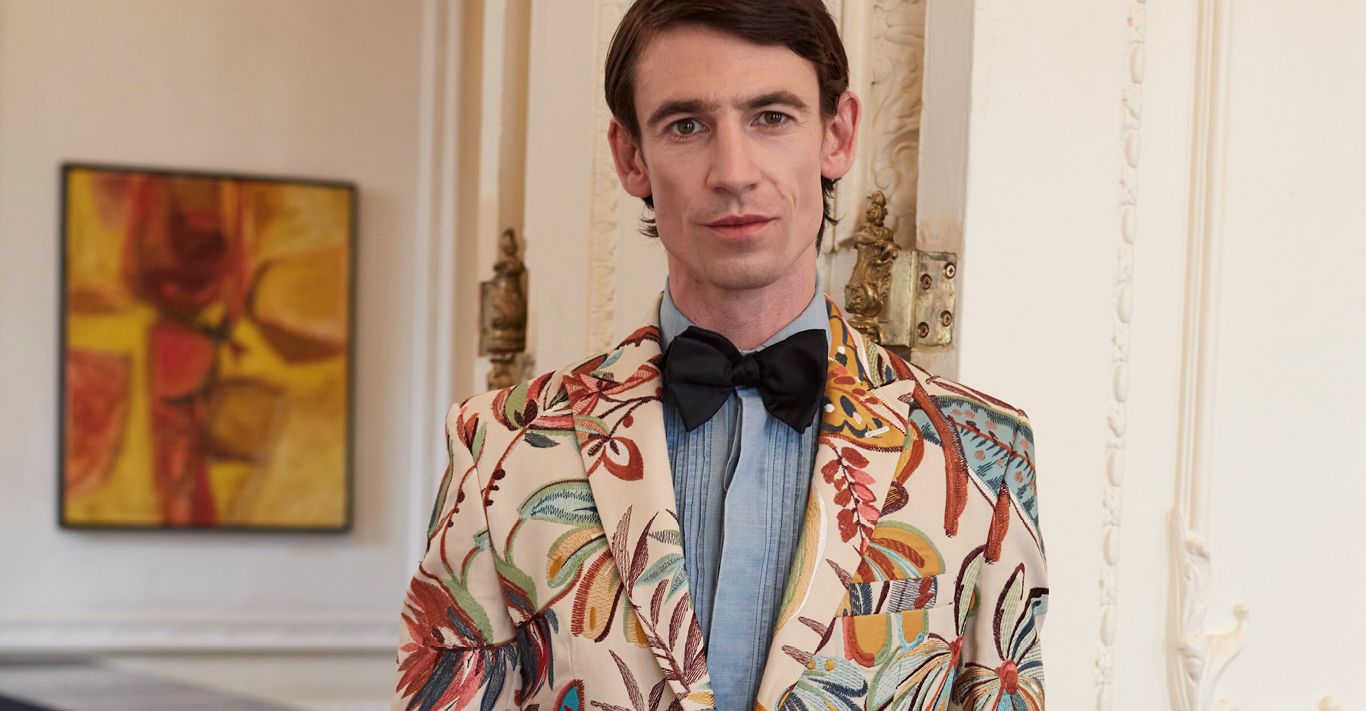WORDS
Peter Howarth
PHOTOGRAPHY
Courtesy of Gucci by Ronan Gallagher
I have long had Gucci’s creative director Alessandro Michele down as a Romantic. Not ‘romantic’ with a small ‘r’ as in the saccharine romcom, candle-lit dinner and bunches of roses sense. But with a great big capital ‘R’: the 19th-century definition, where a love of emotion and the senses comes all too often with an awareness of fleeting mortality. Take the opening lines of Keats’ Ode to a Nightingale, for example: ‘My heart aches, and a drowsy numbness pains/ My sense, as though of hemlock I had drunk.’ Keats died in Italy, of course, in Rome, and Shelley drowned in the Gulf of Spezia on his way back from Livorno to Lerici. He was in a boat named the Don Juan, after Byron’s poem. There is a clear Italian connection here.
The Romantics influenced the Gothic, of course. Mary Shelley, author of Frankenstein, was poet Percy’s wife, and that famous book was conceived one night in the summer of 1816 at the Villa Diodati near Lake Geneva as a result of a competition among guests of Lord Byron to see who could write the best ghost story. Percy Bysshe Shelley, then Mary’s lover, was there, as was John Polidori, Byron’s personal doctor, who would become the author of the short story The Vampyre, which predates Bram Stoker’s Dracula by nearly 80 years.
Alessandro Michele understands all this. He is a cultural magpie – part historian, part dreamer, part fashion designer, and, I suggest, more than a bit Romantic. Picasso is thought to have said that ‘Good artists borrow, great artists steal’, and there is something about the way in which Michele appropriates in a truly eclectic way that makes you smile and admire the man’s breadth of reference, and audacity. Punk rock gets a look in, as do the Medicis, Northern soul, Star Trek, Botticelli and 1980s hip-hop.
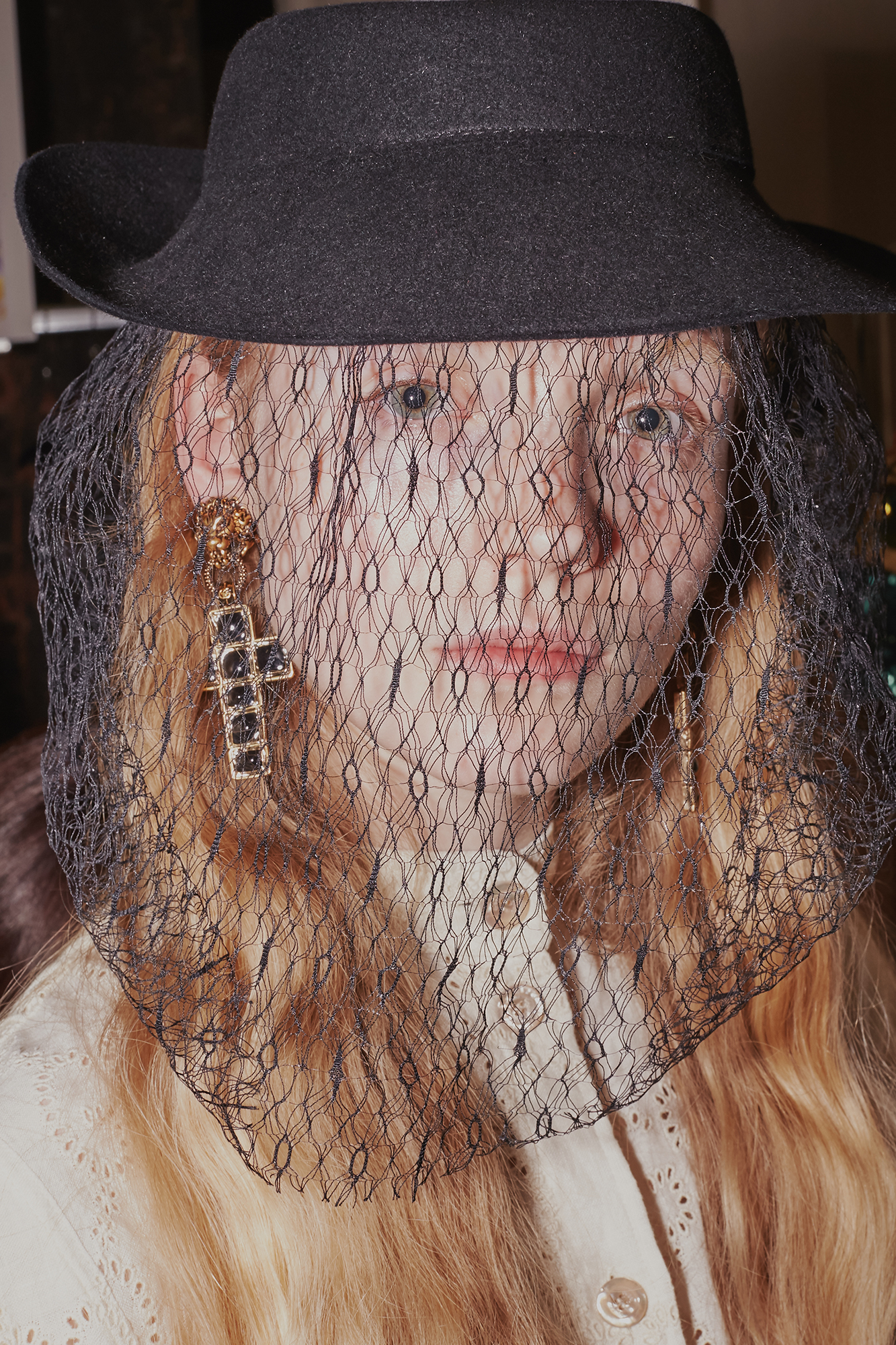
But it is towards the Gothic that Michele is travelling at present. The show in Milan for autumn/winter 2018 was set in a clinical hospital-like environment where models looked like they were the subjects of sinister operations. It was Robert Browning’s The Laboratory meets Kubrick’s 2001: A Space Odyssey. Some even carried fleshy baby dragons, or gruesome lifelike heads of themselves like Salome or Gawain’s Green Knight.
For his follow-up – Cruise 2019 – a collection that arrives in stores in October, the Gucci circus decamped to Arles in Provence, a beautiful town which boasts not only a spectacular Roman Theatre, and an amphitheatre that in its day could house 21,000, but also the yellow-awninged café Van Gogh immortalised in paint, and now Frank Gehry’s new geometric, futuristic tower for the contemporary arts-supporting LUMA Foundation. You can see why the place appealed to the mercurial Michele.
He apparently stumbled upon it in the summer of 2017, during the annual photographic festival that takes over the town. Here, multiple venues open up to exhibit pictures in the way that furniture and design appropriate Michele’s Milan at the yearly Salone del Mobile furniture fair. Charmed by the tiny streets and the ancient history, Michele also made the acquaintance of Maja Hoffmann, the Swiss art collector, entrepreneur and philanthropist, who is the founder of the LUMA Foundation. As luck would have it, Hoffmann owns a house that butts up to the Alyscamps, an extraordinary Roman necropolis, which was modified under Christianity, and which, in the 18th century acquired a long walkway that the Friars Minor used for the placing of stone sarcophagi.
It was here that Michele saw the opportunity to stage a cruise show quite unlike anything that had ever been done before. Enlisting Hoffmann’s help and influence in the town, he set about designing a piece of theatre that would encapsulate where his aesthetic has journeyed to. The town, it turned out, welcomed the idea. In fact, one of the funniest moments during my three-day visit during the spring to see Gucci Cruise was witnessing a cashier at a small restaurant earnestly asking a woman who was clearly part of the Gucci crew (identified by her branded T-shirt) whether everything was ready, and saying that it was important that it all went off perfectly as now the town would forever be associated with the Italian brand’s name.
With military precision, Gucci ensured that its operation would indeed run smoothly. Apparently some 200 staffers from Italy moved to Arles to set up an operational HQ for more than two weeks. A team of IT experts was deployed to make sure there was access to the Gucci server from Provence and even the security guards for the big night were brought in from the firm that handles such matters in Milan.
And so it was that about a couple of months ago a crowd of international fashion journalists, local dignitaries and more than a few celebrities – more of that later – found themselves walking down an eerie path lit by giant candelabras and lined with large coffins. A soundtrack played ghostly howls, shrieks and chanting. When we alighted at the end of this spooky parade, we were greeted by a vision that was pure theatre. With the backdrop of the 12th-century Romanesque church of Saint Honorat, a churchyard broiled with red dry ice.
Then, to a soundscape of a chiming church bell and dull rumblings of bassy music, a fire trail ignited, snaking along either side of the catwalk, and the models marched out. They were greeted by great shooting flames from pyrotechnic devices hidden in the graveyard. Frankly the whole thing began to resemble the seventh circle of hell in Dante’s Inferno.
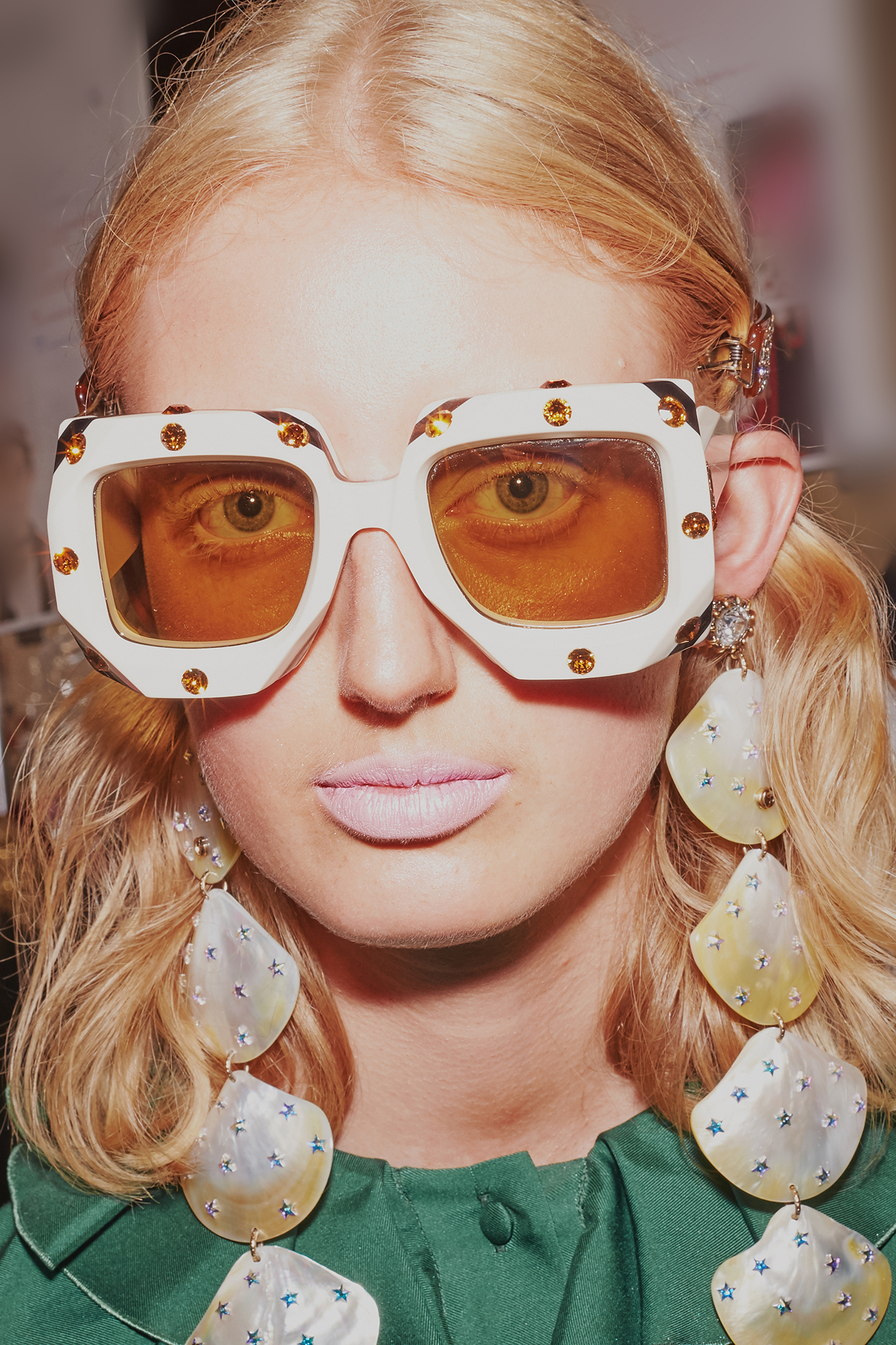
The clothes were, as we have come to expect from Michele, at first glance more costume than daily wardrobe. Pattern upon pattern, layer upon layer, models were laden with jewellery, bags, accessories and glasses. Each look created a character: there was a woman with piled up Marie Antoinette hair in a off-one-shoulder black evening dress with a white scalloped neck; a 1960s Italian head-scarfed girl-about-town in floral skirt and waistcoat over geometric red and purple top, with matching gold-and-red gloves and handbag, and enormous sunglasses; a Tudor-like lady ready for a ride in a Royal park; a maiden in a Greek dress that could have come from Keats’ Grecian Urn; a bride in Victorian-look white silk, ruched at the body and with long flowing train, and any number of male sporty dandies in belted, decorative smoking jackets, patterned intarsia knits, 1970s flares, lurex trousers and jumbo-collared shirts, carrying clutches and backpacks.
None of these was a literal historical representation, you understand. Michele is too smart to simply mine the past. It is true that many of the motifs in his work can be traced back to the House archive, which, as well as the geometric GG pattern and green-red-green web stripe, also contains florals, like the Flora print created for Grace Kelly in 1966, and animals, like the bee motif that adorned ready-to-wear in the 1970s. But Michele is not in the business of simply reissuing greatest hits in a newly spruced-up form. Instead, he has taken the almost-century of history of this brand, blended it with his wide-ranging cultural interests and applied his imagination.
In 1817, Keats wrote to his friend Benjamin Bailey: ‘The imagination may be compared to Adam’s dream – he awoke and found it truth.’ The reference is to the first man’s dream in the Garden of Eden, and the contemporaneousness of Michele’s work derives from the fact that he has created his very own Gucci lexicon of design motifs, which he terms the Gucci Garden. Some imagery, patterns and decorative hardware derive from the archive, while most does not. New inhabitants of Michele’s Garden include the kingsnake and tiger, his two pet Boston terriers, Orso and Bosco, a whole aviary of birds, plus a wide assortment of flora to go with this fauna, including the Tian landscape print that is inspired by 18th-century Chinese screens and tapestries.
This dreamworld finds concrete representation in the Gucci Garden in Florence, the House’s museum, located in the Palazzo della Mercanzia, which dates back to the 14th century. Here, current Gucci clothes and accessories are displayed alongside vintage pieces, along with objets and memorabilia. The exhibition is curated in a non-chronological way and some of the young artists Michele has invited to collaborate with him (many found on Instagram) have been given free rein to decorate the place. This is no austere, reverential history lesson. It is more a look into the mash-up that takes place in Michele’s head. Furthermore, the Gucci Garden store on the ground floor, under the two stories of galleries, has products that are almost all created uniquely for this boutique: a global fashion house behaving like a local shopkeeper, which is what Guccio Gucci was back in 1921 when he founded the label.
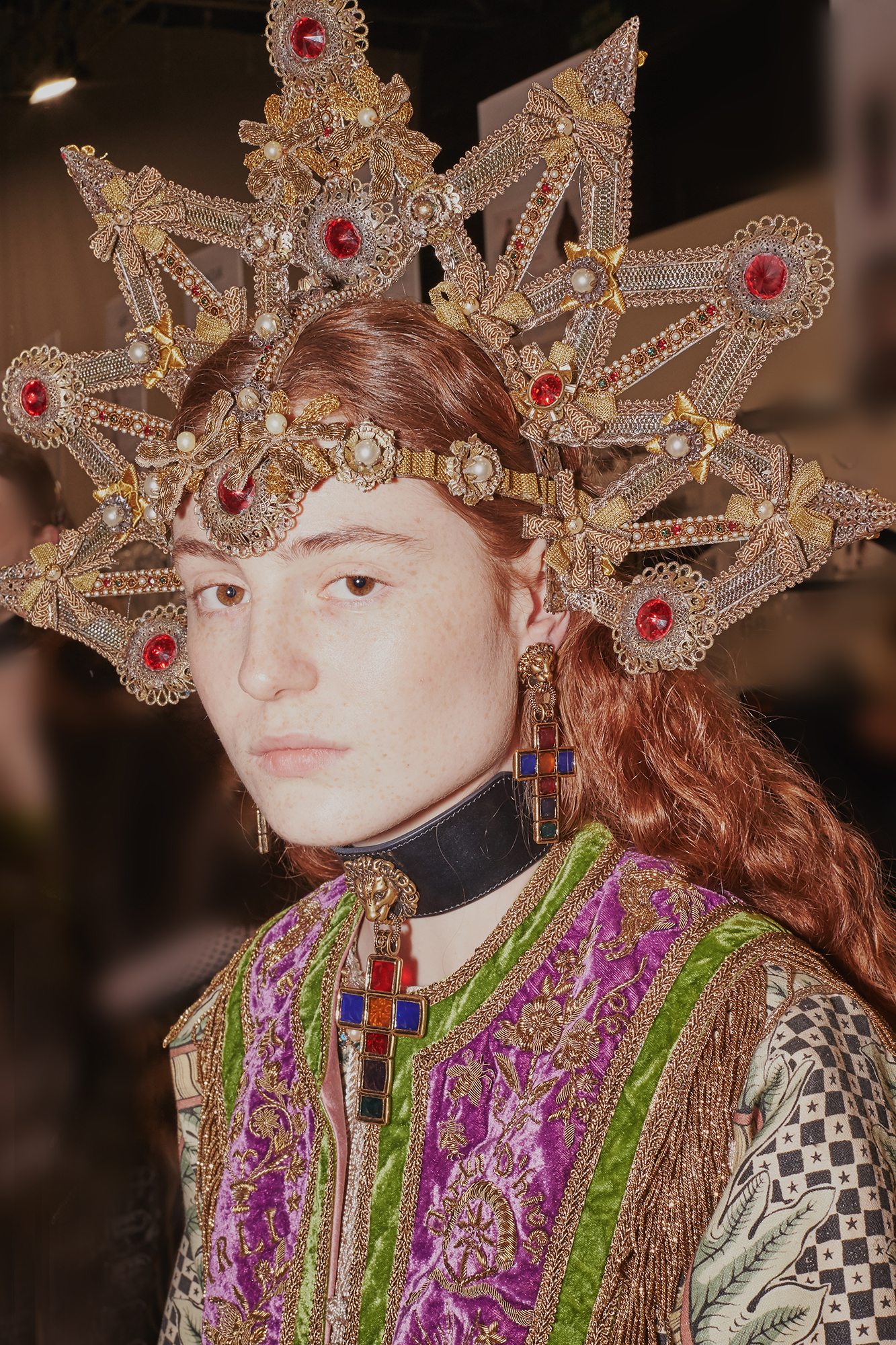
Thus, while the craftsmanship and many of the intricate fabrics – incorporating brocade, embroidery and print after print – of any Gucci collection might recall the past, when clothes were made individually, by hand, the look is rendered utterly of-the-moment. And in a two-thousand-year-old necropolis in Arles it was brought to life by 114 models, cast for their distinctly idiosyncratic features. (Michele is something of a godfather to all those who might have once found it hard to fit in to conventional ideas of fashion and looking good – he champions the quirky; I remember Morrissey doing something similar for awkward teenage boys in the 1980s.)
It’s actually pointless trying to describe these clothes in words. They defy that. You need to see them to fully comprehend the attention to detail and the sheer joy the designer clearly takes in his craft. And the joy is important. Michele’s Romanticism understands that there is pleasure in pain, happiness in yearning – Keats’ Nightingale again: ‘Tis not through envy of thy happy lot, / But being too happy in thine happiness, / That thou… / Singest of summer in full-throated ease’.
It is undoubtedly this aspect of Gucci – its unfettered revelling in the potential of the visual – that has attracted someone else who sings in full-throated ease: the most stellar of the stars sitting on the front row in Arles was Sir Elton John, a man not known for being a shrinking violet when it comes to his wardrobe. This, after all, is a performer who has taken to the stage dressed as a rhinestone-covered baseball player, Tina Turner and a giant hornet! The clothes are of course an expression of the exuberance of the music; a dextrous, bluesy pianist, John’s catalogue is all about energy and positivity. When he played at the Gucci after party in Maja Hoffmann’s garden, his final number, I’m Still Standing, was belted out as a defiant, life-affirming anthem – and, of course, he was wearing a black, glittering Gucci jacket. If the musician is ‘feeling like a little kid’, then in Michele he has found the perfect partner in fashion-crime, someone with whom he can raid a whole sweet shop full of sartorial baubles in childlike delight.
However, Elton John is not just a starry friend to the brand, who sits front row and enjoys a party turn at the piano. Michele is designing his farewell tour wardrobe, and a year or so ago, the musician invited the designer to rifle through his old stage costumes for inspiration for a number of catwalk outfits. For his part, John fully acknowledges the sweet shop analogy. ‘Opening up my costume archive and seeing how Alessandro reinterpreted key looks unearthed an exhilarating rush of emotions. I can’t believe how sartorially crazy I was, particularly in the 70s! With fashion back then, I was like a big kid in a sweet shop. I couldn’t get enough, and kept trying newer and crazier looks. I get the same rush of enthusiasm when I walk into a Gucci boutique today,’ he says. He must have felt near overwhelmed in Arles, then, as this was peak Gucci.

Significantly, what is not apparent from such an outing is that if you deconstruct the looks that stalked the Alyscamps graveyard, if you were to peel back the layers, you would end up with individual garments that are often very wearable. What is remarkable, though, is that each piece will have something about it that makes it special in itself. It was my friend Anna Murphy, fashion director of The Times, who first alerted me to the theory that the key to Michele’s aesthetic lies in the fact that he was for many years an accessories designer at Gucci.
If you are designing handbags and shoes, reasons Murphy, you do so in the knowledge that people are not likely going to match them with a whole outfit from your label. So you work these things harder, in order that they can stand on their own. A woman will have a favourite pair of shoes that she will love because of their design and will often wear them to elevate an otherwise more conventional outfit. Now take that idea – that every item must justify its existence as a piece of design in its own right – and you have today’s Gucci, where every dress, every jacket, every sweater and shirt has been ‘Guccified’. You only need to buy one piece to enjoy a bit of Gucci’s fairy dust, as each piece proudly proclaims its ‘Guccification’.
And this, after all, is well suited to how most people shop – cherry picking items they like, and not bulk-buying head-to-toe from the same place. Thus, a teenager can save for a pair of trainers or a T-shirt to become a legitimate member of the Gucci Gang, while a more mature customer can pick up a handbag, or blouse, for the same reason. Significantly, the president and CEO who gave Michele the keys to the house three years ago, Marco Bizzarri, is to be congratulated that he saw how someone with this expertise could treat all the products, including the clothes, as accessories, to create something truly fresh.
But perhaps beyond the merchandise, Michele’s real achievement is that he has managed to create an idea of fashion that chimes so perfectly with the times. When his first collection of hastily assembled menswear appeared in January 2015, more than a few eyebrows were raised. What was this dressing-up box confection of non-gender-specific decoration? How could boys/girls in shirts with pussy bows be the successors to the previous incumbent Giannini’s international jet set polish?
What we couldn’t know then is that we were entering a period where people would crave the personal, the non-corporate, the different, the unusual. And above all, what they perceive as the authentic. Michele has turned out to be fashion’s challenger at a moment when popular culture is favouring those who question the status quo.
Furthermore, a problem in these days of big data and the dominance of the algorithm is that we are constantly served up a diet of what we already know and like. And when it comes to fashion, this becomes the style equivalent of an aesthetic echo chamber. What is missing is the element of surprise. Alessandro Michele has surprised us all, and very probably himself. His appointment – a back room boy of 12-years’-service, originally hired by Tom Ford, now promoted to the top spot instead of the expected parachuting in of an established name from elsewhere – was an indication that things at Gucci were going to be done differently.
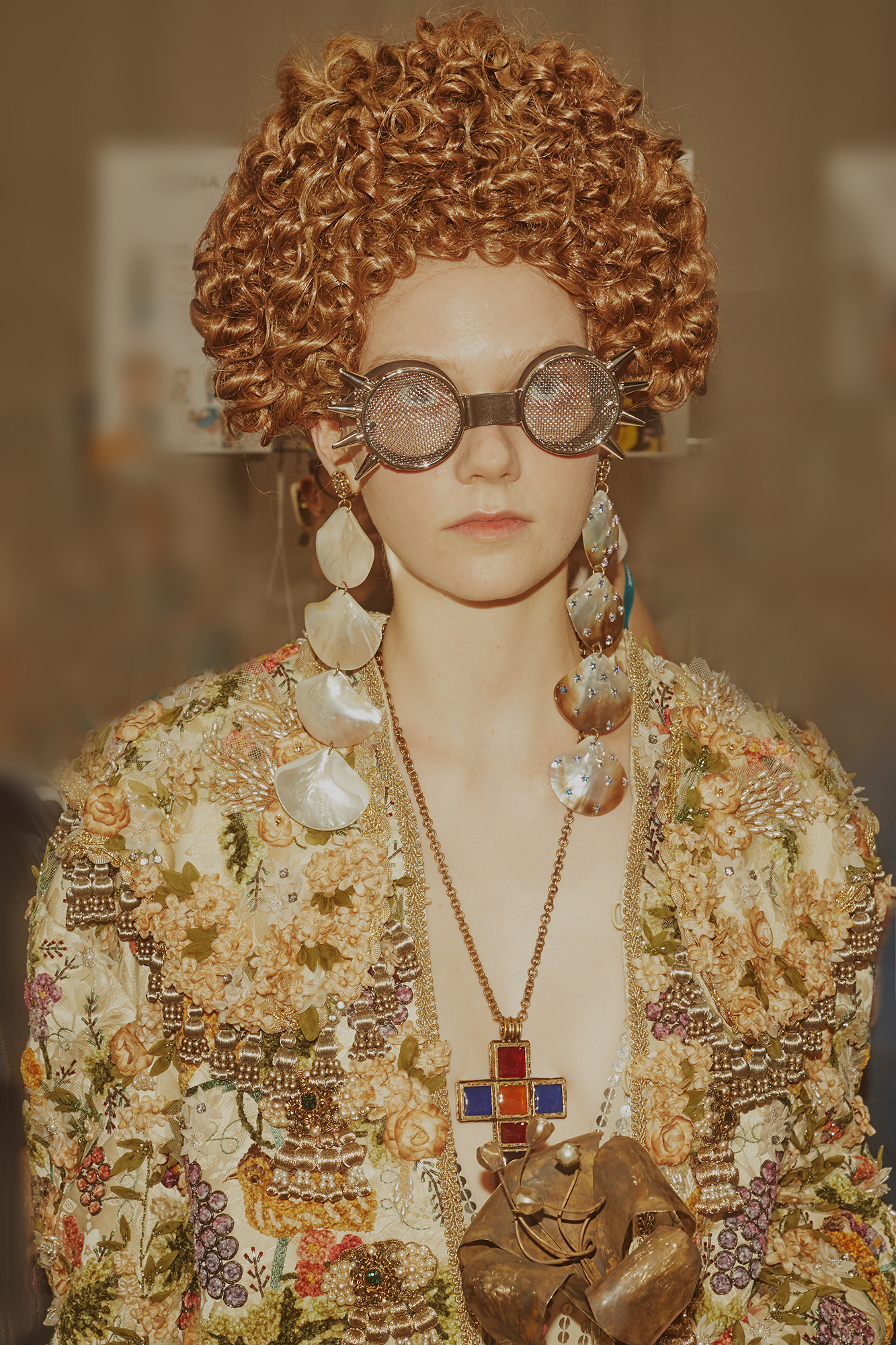
The naysayers and headscratchers have been proved wrong in a remarkably short period of time. President and CEO Bizzarri must take much of the credit for this – for committing one hundred per cent to his protégé’s unusual, personal, artistic vision, and not requiring it to be compromised in any way. The result is a brand that is now – especially post Arles – on fire.
I will leave you with an anecdote. Not long ago I was having a drink with an acquaintance. He is a man who works for a luxury car company in marketing and is in no way someone you would have down as a fashionista. Habitually in a suit and shirt, he is a very English sort of bloke. At one point, I can’t remember why exactly, Gucci came up in conversation, and he asked me what I thought he could wear from the collection. He said simply, ‘I need some Gucci’. ‘Need’ was the word he used, not ‘want’. Now he may end up with a bag, a pair of shoes, or a classic suit with a patterned lining – for the firm still makes beautifully cut tailoring with the ‘Guccification’ on the inside – but whatever he goes for, the fact that this man, who you would ordinarily identify as a traditional ‘professional’ dresser, wants to taste some of the Romantic fruit from the Gucci Garden speaks volumes.

